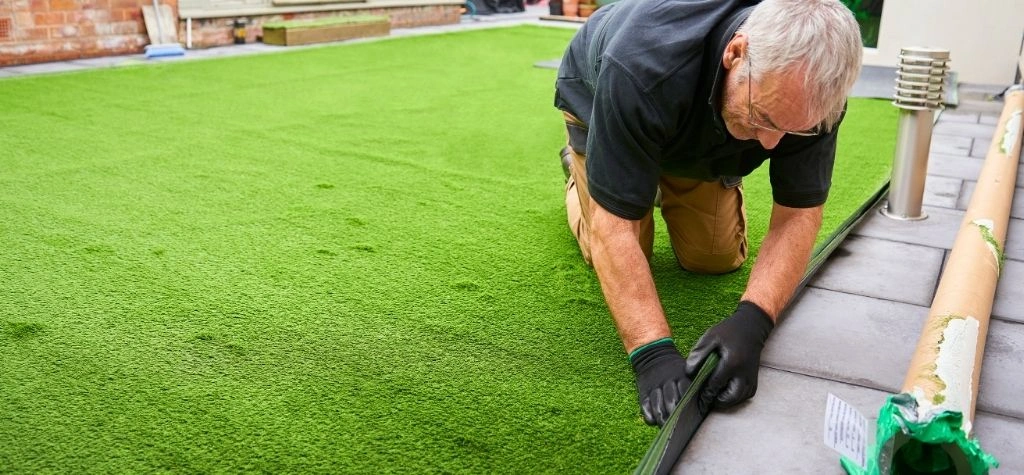Step By Step Guide On How To Lay Artificial Grass

Do you want to make alterations to your garden? If yes, then installing artificial grass is the best option. Fake grass is gaining popularity among Australian homes as a low-maintenance substitute for a lawn with natural grass.
Though they lack the time, everyone desires a beautiful garden that looks amazing all year round. So, installing synthetic grass is simple and requires very little upkeep. There’s no need to worry about the installation process of fake turf.
Your outdoor area can be quickly transformed into a lush, welcoming setting by using the appropriate products and following the correct guidance. Look through the step-by-step guide on how to lay artificial grass:
Bring tools for installing fake grass
Make sure you are working with the appropriate tools. But do you really know the basic specifications of the artificial grass? If not, so you have to simplify the procedure and ensure you get the best finish possible.
Tools including a sharp knife and extra blades, knee pads, gloves, a tape measure or straight edge, a compaction plate or roller, a turf cutter, a stiff outside broom or motorised power brush, a skip, a sand spreader, and a notched tail are needed to lay synthetic grass.
Spray the areas with a weed killer
Pull out the greenery where you will install the fake turf. If possible, do this at least two weeks before you begin your project to provide time for it to do its job and eradicate all native plants. Implementing this may ensure the plant growth is completely dead at the roots.
Remove the top level of the soil
Dig up the top three or four inches of turf to create space for the new base if you put artificial grass Melbourne over the soil. To assist you in breaking up the dirt and digging up the lawn, you can utilise a small rototiller. Remove any traces of grass and other vegetation, as their demise could result in uneven terrain.
Allow soil drenched with rain to dry for a few days before excavating to avoid slumping. Although the remaining surface is not correctly graded, any loose turf should be compacted by walking over it or using a hand tamp. It is advised to have a little slope to enhance drainage.
Install a base
Add a gravel or crushed stone layer to the excavated area to create a sturdy foundation for your artificial turf. Using a rake, level out and evenly distribute the material. To buy artificial turf Melbourne, choose Synthetic Grass Living, which has collections.
Aim for a depth of about 2-3 inches for best drainage. After the base is installed, compact the material with a lawn roller. It will make the surface where the fake grass will sit hard and level.
Add a weed barrier
Construct a geotextile barrier to keep weeds from growing through your artificial turf at the bottom of the excavated area. Additionally, this may deter earthworms and gophers from damaging your fake turf.
Remember that a geotextile barrier is a strong, tightly woven weed blocker. You can get one from a legitimate nursery or garden center, a fake grass provider, or a business that offers irrigation and landscaping materials.
A weed blocker you may get from a home improvement store is not the same as a geotextile barrier. You can choose to install this on top of the base material. Consider adding a layer of mouse wire if your rodent problem is severe.
Add a layer of sand
Cover it with a layer of sand or silica sand after compacting the base. This will give the artificial turf a cushioning layer and further stabilise the foundation. Using a rake, level out the sand and distribute it evenly over the surface. Aim for sand that is between half and one inch deep.
Must read: Is synthetic turf better than natural turf?
Roll out the artificial grass
The synthetic turf should now be spread out. When purchasing synthetic grass Melbourne, consider Synthetic Grass Living, which sells high-quality goods. Unroll the grass in the desired direction, carefully slightly overlapping the edges.
Use a utility knife to trim any extra grass. After the grass is in place, brush the fibers upright with well-built bristles. This will contribute to the grass’s more organic appearance and feel.
Secure the edges
You can use edging material to anchor the artificial turf edges. This will minimise the grass’s natural tendency to move over time. Just lay the edging material around the grass’s edge and fasten it there with screws or landscaping stakes.
Wrapping it up
As a result, you learn a step-by-step guide on how to lay artificial grass. It could be simple to install synthetic grass yourself if you have the right tools and knowledge. If you follow these simple guidelines, you might have a stunning, long-lasting lawn by doing little maintenance. If you need any assistance from professionals, Synthetic Grass Living is always there to help you. Feel free to give us a call anytime.
